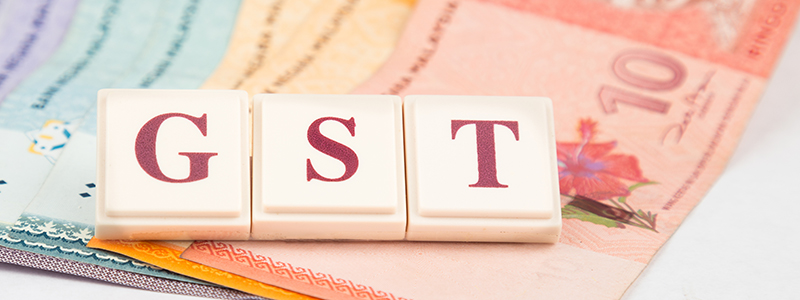
India a bright spot in global economy, says IMF report
The Dollar Business Bureau  With higher political certainty, improved business confidence, reduced external vulnerabilities and lower commodity prices, the Indian economy is expected to grow at 7.5 % for the next two years, the International Monetary Fund (IMF) said. In its Regional Economic Outlook for Asia and the Pacific released on Thursday, the IMF said India will be a “bright spot” in the global economy. “Domestic and external vulnerabilities have moderated on the sharp decline in the current account deficit and inflation, the fiscal position has begun to improve, and a resumption of capital inflows allowed a significant buildup in foreign reserves. This confluence of achievements has made India one of the bright spots in the global economy,” the report said. However, the survey also underlines the risk of downside in India due to potential surges in global financial market volatility and slower global growth. “India’s growth rate is expected to rise to 7.5 percent this year and next, making it one of the fastest growing economies in the world,” the report said, adding, “while several recent policy measures have helped ease supply-side constraints, further measures are needed in the energy, mining, and power sectors.” The IMF, however, cautioned the Indian government to continue with reforms to streamline and expedite land and environmental clearances, increase labour market flexibility and simplify business procedures to sustain faster and more inclusive growth. Comprehensive overhaul of food and fertilizer subsidies and measures to raise the tax-to-GDP ratio to pre-crisis levels remain crucial to finance social and capital spending priorities. “The government’s strategy to better target subsidies, which relies on direct benefit transfers, increased financial inclusion, and use of the Aadhaar is expected to yield large savings,” the survey said. The outlook also hailed several recent measures, including those related to Goods and Services Tax (GST), taken by the government. “Following its landslide victory in May 2014, the new government of Prime Minister Narendra Modi introduced numerous economic reforms, including deregulating diesel prices and raising natural gas prices, moving to create more flexible labor markets and introduce a goods and services tax, enhancing financial inclusion, and relaxing FDI limits in several key sectors,” it said. The report also praised RBI for adopting a flexible inflation-targeting framework. “These actions have also served to buoy investor sentiment.” The survey of the international body has projected steady growth in the entire Asia and the Pacific region up to 5.6% in 2015, easing slightly to 5.5% next year. Growth will be driven by domestic demand, underpinned by healthy labour markets, low interest rates, and the recent fall in oil prices. The global recovery, while moderate and uneven, will continue to support Asia’s exports, say the authors of the report. According to the outlook, China’s economy is slowing to a more sustainable pace—6.8% GDP growth in 2015, and 6.3% in 2016, while growth in Japan is picking up to 1.0% this year, and 1.2% next year. Among the countries of the Association of Southeast Asian Nations (ASEAN), Malaysia is expected to slow and the Philippines should see growth increase, it said. Overalls, Asia will remain the global growth leader, even though potential growth— the economy’s speed limit—is likely to slow. While Asia accounts for nearly 40% of global output, it contributes nearly two-thirds of global growth. The report observed that lower oil prices have provided an opportunity to undertake further fiscal reforms for a number of countries, including Malaysia, India, and Indonesia. “The large swings in the value of the major reserve currencies could create an uncomfortable trade-off between financial stability and competitiveness. On the other hand, lower energy prices could provide a further boost to Asia’s growth if more of the savings on oil import bills is spent,” it said.
With higher political certainty, improved business confidence, reduced external vulnerabilities and lower commodity prices, the Indian economy is expected to grow at 7.5 % for the next two years, the International Monetary Fund (IMF) said. In its Regional Economic Outlook for Asia and the Pacific released on Thursday, the IMF said India will be a “bright spot” in the global economy. “Domestic and external vulnerabilities have moderated on the sharp decline in the current account deficit and inflation, the fiscal position has begun to improve, and a resumption of capital inflows allowed a significant buildup in foreign reserves. This confluence of achievements has made India one of the bright spots in the global economy,” the report said. However, the survey also underlines the risk of downside in India due to potential surges in global financial market volatility and slower global growth. “India’s growth rate is expected to rise to 7.5 percent this year and next, making it one of the fastest growing economies in the world,” the report said, adding, “while several recent policy measures have helped ease supply-side constraints, further measures are needed in the energy, mining, and power sectors.” The IMF, however, cautioned the Indian government to continue with reforms to streamline and expedite land and environmental clearances, increase labour market flexibility and simplify business procedures to sustain faster and more inclusive growth. Comprehensive overhaul of food and fertilizer subsidies and measures to raise the tax-to-GDP ratio to pre-crisis levels remain crucial to finance social and capital spending priorities. “The government’s strategy to better target subsidies, which relies on direct benefit transfers, increased financial inclusion, and use of the Aadhaar is expected to yield large savings,” the survey said. The outlook also hailed several recent measures, including those related to Goods and Services Tax (GST), taken by the government. “Following its landslide victory in May 2014, the new government of Prime Minister Narendra Modi introduced numerous economic reforms, including deregulating diesel prices and raising natural gas prices, moving to create more flexible labor markets and introduce a goods and services tax, enhancing financial inclusion, and relaxing FDI limits in several key sectors,” it said. The report also praised RBI for adopting a flexible inflation-targeting framework. “These actions have also served to buoy investor sentiment.” The survey of the international body has projected steady growth in the entire Asia and the Pacific region up to 5.6% in 2015, easing slightly to 5.5% next year. Growth will be driven by domestic demand, underpinned by healthy labour markets, low interest rates, and the recent fall in oil prices. The global recovery, while moderate and uneven, will continue to support Asia’s exports, say the authors of the report. According to the outlook, China’s economy is slowing to a more sustainable pace—6.8% GDP growth in 2015, and 6.3% in 2016, while growth in Japan is picking up to 1.0% this year, and 1.2% next year. Among the countries of the Association of Southeast Asian Nations (ASEAN), Malaysia is expected to slow and the Philippines should see growth increase, it said. Overalls, Asia will remain the global growth leader, even though potential growth— the economy’s speed limit—is likely to slow. While Asia accounts for nearly 40% of global output, it contributes nearly two-thirds of global growth. The report observed that lower oil prices have provided an opportunity to undertake further fiscal reforms for a number of countries, including Malaysia, India, and Indonesia. “The large swings in the value of the major reserve currencies could create an uncomfortable trade-off between financial stability and competitiveness. On the other hand, lower energy prices could provide a further boost to Asia’s growth if more of the savings on oil import bills is spent,” it said.
May 7, 2015 | 7:23 pm IST.






 to success.
to success.